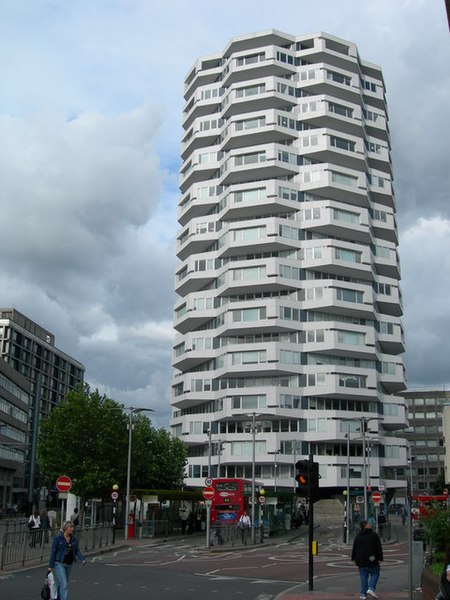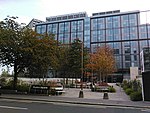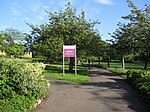No. 1 Croydon

No. 1 Croydon (formerly the NLA Tower, and colloquially the 50p Building, the Weddingcake or the Threepenny bit building) is a tall building at 12–16 Addiscombe Road, Croydon, Greater London, next to East Croydon station. It was designed by Richard Seifert & Partners and completed in 1970. It has 24 storeys and is 269 feet (82 m) high. 'NLA' stood for 'Noble Lowndes Annuities'. It was one of many new buildings constructed in the growing town of Croydon in the 1960s. The development of tall buildings was later encouraged in the 2004 London Plan, which led to the erection of new skyscrapers as Greater London went through a high-rise boom.
Excerpt from the Wikipedia article No. 1 Croydon (License: CC BY-SA 3.0, Authors, Images).No. 1 Croydon
Addiscombe Road, London Addiscombe (London Borough of Croydon)
Geographical coordinates (GPS) Address External links Nearby Places Show on map
Geographical coordinates (GPS)
| Latitude | Longitude |
|---|---|
| N 51.3749 ° | E -0.091 ° |
Address
No. 1 Croydon
Addiscombe Road 12-18
CR0 0XT London, Addiscombe (London Borough of Croydon)
England, United Kingdom
Open on Google Maps











